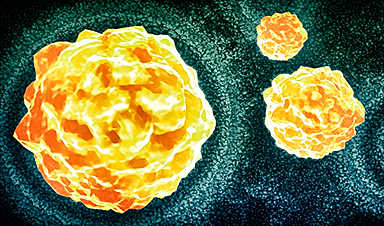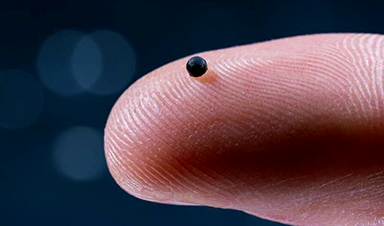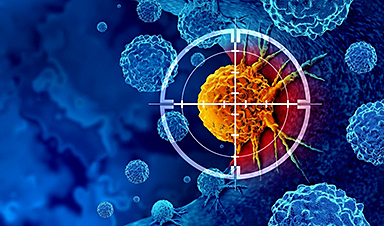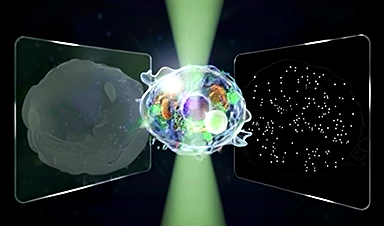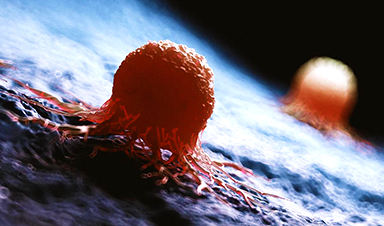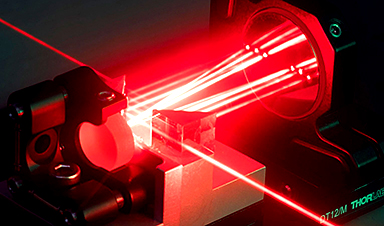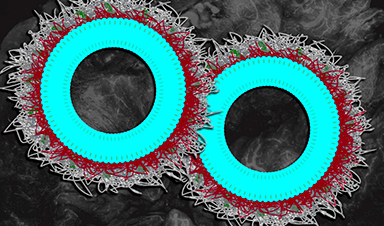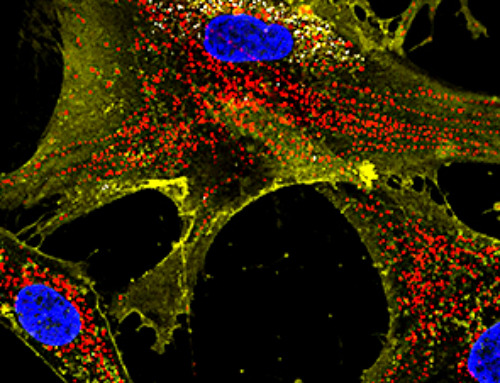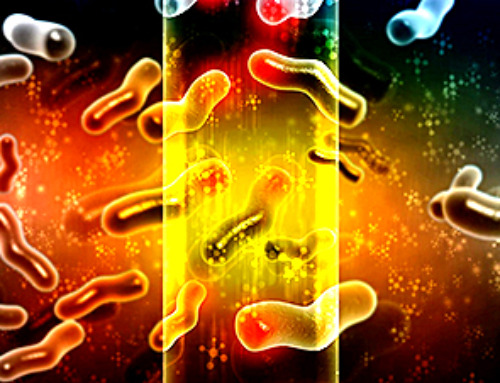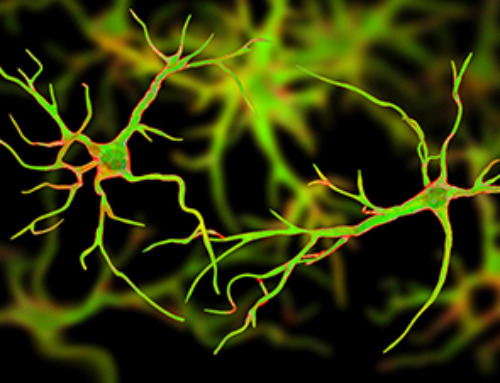In an article recently published in the journal Nanotechnology, researchers employed a single particle imaging method for fluorescence excitation with moderate intensity to achieve spatial resolution. Here, the semiconductor nanocrystals were accessed, whose emission lifetimes depended on excitation intensity.
Nanocrystals
The excited fluorophore’s de-excitation rate with optical modulation is an important tool to achieve super-resolution in microscopy techniques, including ground state depletion microscopy, stimulated emission depletion, or reversible saturable optical fluorescence transitions microscopy.
In organic dyes or fluorescent proteins, the excitation methods involve transition rate tailoring from a single excited to a ground state. However, semiconductor nanocrystals intrinsically possess multiple excited states, grey or charged states.
The excessive energy stored either in the nanocrystal core or trapped in the bulk of the nanocrystal or at its surface results in the origin of multiple states. Wavefunction overlap of an exciton with trapped charges can increase the non-radiative energy transfer probability from the exciton to the charge. Thus, the exciton’s excited-state lifetime decreases based on the location and amount of charge trapped within the particle.
Semiconductor Nanocrystals for Super-Resolution Imaging
In the present study, the researchers used the semiconductor nanocrystal’s excitation-intensity-dependent lifetime to increase the spatial imaging resolution beyond the diffraction limit. A single semiconductor nanocrystal was scanned through a confocal spot with a diffraction limit to modulate the excitation power density, which is maximum at the center and minimized towards the edges. Thus, several photo-generated excess charges in a particle can be modulated; consequently, its excited-state lifetime is also modulated.
The lifetime modulation relative to the position of a particle according to the focused laser allowed the enhancement of the spatial resolution in the scanned image of the nanocrystal. This was demonstrated by two close-by emitter images’ disentanglement, which remained unresolved in the intensity image. This method combined the simplicity and robustness of the measurement technique that combines the laser-scanning confocal microscope with fluorescence-lifetime measurement capability.
Research Findings
The researchers used cadmium selenium (CdSe) /cadmium sulfur (CdS) / thick-shell quantum dots (QDs); the shell thickness helped reduce fluorescence blinking. A transmission electron microscopy (TEM) image showed that the average particle size is in the range of 18 ± 2 nanometers, which included a CdS shell consisting of approximately 15 atomic layers. In this type of giant QDs, the interaction between excited-state carriers and surface trap states was weakened, further suppressing the non-radiative Auger recombination. Fluorescence blinking was suppressed by reducing the Auger efficiency and hot-carrier capture. If not suppressed, blinking could lead to patchy single-particle confocal scan images, which reduce the particle’s localization accuracy.
The radially polarized laser beam was used to scan semiconductor nanocrystals with the diffraction-limited focal spot. Herein, the radial polarization majorly led to axially polarized excitation of the approximate diameter of 180 nanometers at a wavelength of 640 nanometers. This enhanced the diffraction-limited resolution by approximately 1.4 times compared to a linearly polarized Gaussian beam.
Multichannel picosecond event timer-equipped confocal microscope was used for all fluorescence measurements, allowing fluorescence lifetime imaging. To focus the excitation light and collect the fluorescence light, a high numerical aperture objective was equipped for the system. As an excitation source, a white-light laser system with an acousto-optical tunable filter was used. A non-polarizing beam splitter reflected the excitation light towards the objective. Calculations for average excited state lifetime were performed by fitting the fluorescence decay curves with a multi-exponential decay model.
The characteristic intensity pattern, shown from the single quantum emitter’s recorded scan image depended on the orientation of the dipole moment of fluorophore’s excitation. However, the three-dimensional (3D) excitation isotropy of spherical semiconductor nanocrystals avoided the dependency of the excitation pattern on the orientation.
The semiconductor nanocrystal’s fluorescence lifetime that depended on the excitation power allowed the narrowing of the particle’s fluorescence lifetime image compared to the diffraction-limited intensity image.
The non-additivity of lifetimes depended on sigmoid curve steepness at its inflection point and the number of detected photons determining the fluorescence decay curve fitting quality. Further, the non-additivity of lifetimes resulted in the resolution enhancement. However, both curve steepness and photons quantity depended on the experimental conditions, including QD’s optical properties and microscope parameters.
Conclusion
In conclusion, the researchers presented the proof-of-principle measurements for semiconductor nanocrystal excitation-intensity-dependent, lifetime modulation-based, super-resolution imaging method. They showed that this method allowed to achieve a ten times resolution at moderate fluorescence intensities, which further could be enhanced by more photons collection.
This method employed a conventional fluorescence-lifetime confocal microscope based on semiconductor nanocrystal’s fluorescence lifetime imaging to access a broad fluorescence microscopy community. Although the present work involved the excitation by using a radially polarized laser beam, a linearly polarized Gaussian beam can also be used for excitation with minimized focus diameter.
News
Multifunctional Nanogels: A Breakthrough in Antibacterial Strategies
Antibiotic resistance is a growing concern - from human health to crop survival. A new study successfully uses nanogels to target and almost entirely inhibit the bacteria P. Aeruginosa. Recently published in Angewandte Chemie, the study [...]
Nanoflowers rejuvenate old and damaged human cells by replacing their mitochondria
Biomedical researchers at Texas A&M University may have discovered a way to stop or even reverse the decline of cellular energy production—a finding that could have revolutionary effects across medicine. Dr. Akhilesh K. Gaharwar [...]
The Stunning New Push to Protect the Invisible 99% of Life
Scientists worldwide have joined forces to build the first-ever roadmap for conserving Earth’s vast invisible majority—microbes. Their new IUCN Specialist Group reframes conservation by elevating microbial life to the same urgency as plants and [...]
Scientists Find a Way to Help the Brain Clear Alzheimer’s Plaques Naturally
Scientists have discovered that the brain may have a built-in way to fight Alzheimer’s. By activating a protein called Sox9, researchers were able to switch on star-shaped brain cells known as astrocytes and turn them into [...]
Vision can be rebooted in adults with amblyopia, study suggests
Temporarily anesthetizing the retina briefly reverts the activity of the visual system to that observed in early development and enables growth of responses to the amblyopic eye, new research shows. In the common vision [...]
Ultrasound-activated Nanoparticles Kill Liver Cancer and Activate Immune System
A new ultrasound-guided nanotherapy wipes out liver tumors while training the immune system to keep them from coming back. The study, published in Nano Today, introduces a biodegradable nanoparticle system that combines sonodynamic therapy and cell [...]
Magnetic nanoparticles that successfully navigate complex blood vessels may be ready for clinical trials
Every year, 12 million people worldwide suffer a stroke; many die or are permanently impaired. Currently, drugs are administered to dissolve the thrombus that blocks the blood vessel. These drugs spread throughout the entire [...]
Reviving Exhausted T Cells Sparks Powerful Cancer Tumor Elimination
Scientists have discovered how tumors secretly drain the energy from T cells—the immune system’s main cancer fighters—and how blocking that process can bring them back to life. The team found that cancer cells use [...]
Very low LDL-cholesterol correlates to fewer heart problems after stroke
Brigham and Women's Hospital's TIMI Study Group reports that in patients with prior ischemic stroke, very low achieved LDL-cholesterol correlated with fewer major adverse cardiovascular events and fewer recurrent strokes, without an apparent increase [...]
“Great Unified Microscope” Reveals Hidden Micro and Nano Worlds Inside Living Cells
University of Tokyo researchers have created a powerful new microscope that captures both forward- and back-scattered light at once, letting scientists see everything from large cell structures to tiny nanoscale particles in a single shot. Researchers [...]
Breakthrough Alzheimer’s Drug Has a Hidden Problem
Researchers in Japan found that although the Alzheimer’s drug lecanemab successfully removes amyloid plaques from the brain, it does not restore the brain’s waste-clearing system within the first few months of treatment. The study suggests that [...]
Concerning New Research Reveals Colon Cancer Is Skyrocketing in Adults Under 50
Colorectal cancer is striking younger adults at alarming rates, driven by lifestyle and genetic factors. Colorectal cancer (CRC) develops when abnormal cells grow uncontrollably in the colon or rectum, forming tumors that can eventually [...]
Scientists Discover a Natural, Non-Addictive Way To Block Pain That Could Replace Opioids
Scientists have discovered that the body can naturally dull pain through its own localized “benzodiazepine-like” peptides. A groundbreaking study led by a University of Leeds scientist has unveiled new insights into how the body manages pain, [...]
GLP-1 Drugs Like Ozempic Work, but New Research Reveals a Major Catch
Three new Cochrane reviews find evidence that GLP-1 drugs lead to clinically meaningful weight loss, though industry-funded studies raise concerns. Three new reviews from Cochrane have found that GLP-1 medications can lead to significant [...]
How a Palm-Sized Laser Could Change Medicine and Manufacturing
Researchers have developed an innovative and versatile system designed for a new generation of short-pulse lasers. Lasers that produce extremely short bursts of light are known for their remarkable precision, making them indispensable tools [...]
New nanoparticles stimulate the immune system to attack ovarian tumors
Cancer immunotherapy, which uses drugs that stimulate the body’s immune cells to attack tumors, is a promising approach to treating many types of cancer. However, it doesn’t work well for some tumors, including ovarian [...]
